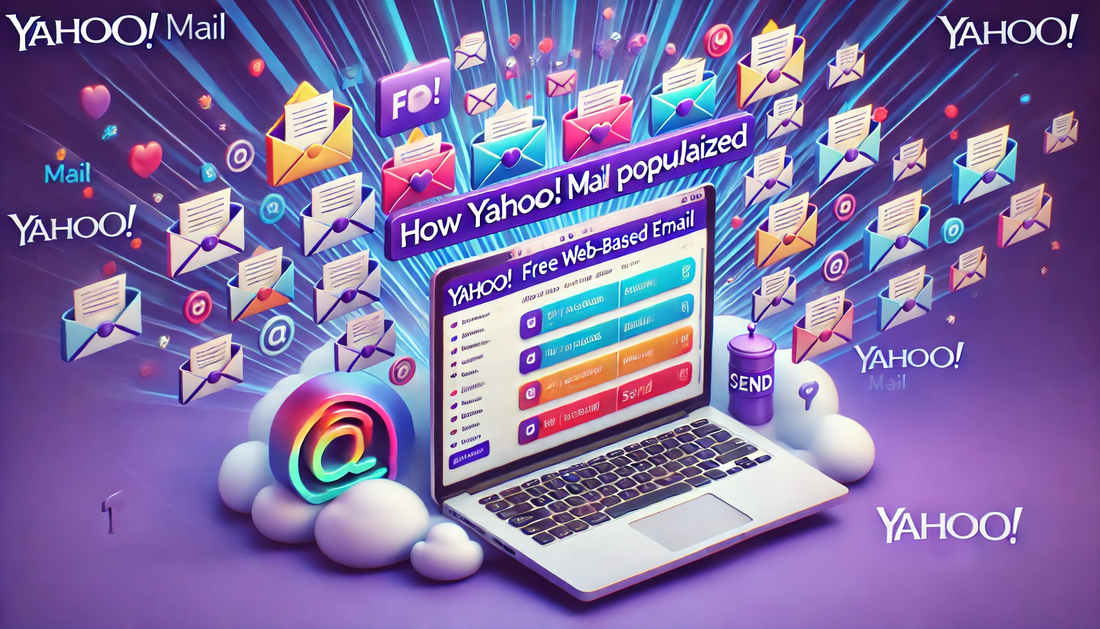When Yahoo! Mail launched in 1997, it revolutionized the way people accessed their emails. By offering free, web-based email to the masses, Yahoo! Mail didn’t just disrupt the market—it defined it.
But how did Yahoo! Mail manage to popularize a service that’s now taken for granted, and what can today’s startup founders learn from their strategy?
This blog dives into Yahoo! Mail’s journey, exploring the key lessons startups can apply to their own ventures in today’s fast-paced digital landscape.
1. Democratize Access to a Vital Service
Before Yahoo! Mail, email was primarily tied to Internet Service Providers (ISPs), and users often had to pay for the service or manage complex configurations. Yahoo! broke that model by offering free, easy-to-access, web-based email to anyone with an internet connection.
Takeaway for startups: Find a way to democratize access to your product. Whether through freemium models or offering basic features at no cost, breaking down barriers to entry can fuel rapid growth and attract a broad user base.
2. Focus on Simplicity and User Experience
Yahoo! Mail succeeded by providing a simple, user-friendly interface. At a time when technical knowledge was often required to use email services, Yahoo! offered a streamlined experience that anyone could use.
Takeaway for startups: Simplicity wins. If your product requires users to jump through hoops, they’ll look for alternatives. Focus on creating a seamless, intuitive experience to keep users coming back.
3. Offer Freemium Models to Build Momentum
Yahoo! Mail’s free offering helped it amass millions of users, but they didn’t stop there. Yahoo! introduced premium features, like expanded storage and custom domains, as part of a paid tier, converting free users into paying customers.
Takeaway for startups: A freemium model is an excellent way to build traction. Offer a robust free version, then entice users with premium features they’ll be willing to pay for as their needs grow.
4. Use Virality to Drive Growth
Email itself is inherently viral—when users send an email, they’re often introducing someone else to the platform. Yahoo! Mail amplified this by adding branding to outgoing emails, increasing its visibility and inviting more people to join.
Takeaway for startups: Build virality into your product. Whether through sharing features, referral programs, or built-in branding, create opportunities for your users to spread the word and bring in new customers.
5. Innovate and Adapt to Changing Technology
Yahoo! Mail continued to evolve with the times, expanding storage as people sent larger files, introducing spam filters, and eventually integrating mobile support as smartphones became more popular.
Takeaway for startups: Innovation is key to staying relevant. Keep improving your product and anticipate future trends, so your offering continues to meet users' needs as technology evolves.
6. Prioritize Security and Trust
As email became essential for personal and business communication, security became a top priority. Yahoo! Mail took steps to introduce spam filters, virus scanning, and encryption to build trust and protect its users.
Takeaway for startups: Trust is non-negotiable. Especially if you’re dealing with sensitive data, you must invest in robust security measures to protect your users. Prioritizing security builds loyalty and credibility.
7. Scale Effectively Through Strategic Partnerships
Yahoo! Mail didn’t grow in isolation. Yahoo! formed partnerships with web portals and tech providers, ensuring their email service was easily accessible from different platforms, which in turn grew their user base.
Takeaway for startups: Leverage partnerships to scale. Find companies whose products complement yours, and create mutually beneficial collaborations that expand your reach and bring in more users.
8. Offer Value Beyond the Core Service
Yahoo! Mail wasn’t just about sending emails. Yahoo! integrated its service with other offerings, such as Yahoo! News, search, and even a calendar feature, making Yahoo! a one-stop-shop for users' digital needs.
Takeaway for startups: Think beyond your core product. Offer features that enhance your users' experience and keep them engaged within your ecosystem. The more value you provide, the stickier your product becomes.
9. Respond to Market Demand
When competitors like Gmail introduced increased storage and features, Yahoo! Mail adapted by expanding its storage limits and improving performance. Rather than sticking to their original offering, they evolved to meet the rising expectations of users.
Takeaway for startups: Keep your finger on the pulse of market demand. Listen to customer feedback, analyze competitors, and stay agile enough to respond to new challenges. Adaptability is crucial for long-term success.
10. Build Brand Recognition
Yahoo! Mail benefitted from the strong branding of Yahoo! itself. With a recognizable name and a presence across multiple services, users trusted Yahoo! Mail because they trusted Yahoo!’s broader platform.
Takeaway for startups: Don’t underestimate the power of branding. Building a trustworthy and recognizable brand can accelerate your product’s adoption. Make sure your messaging is consistent across all channels to build credibility and attract loyal customers.
Conclusion: Replicating Yahoo! Mail’s Success
Yahoo! Mail’s success was driven by its simplicity, accessibility, and adaptability. For startup founders, the lesson is clear: offer value, keep the user experience front and center, and be ready to innovate.
Whether you’re launching a SaaS platform or a consumer app, these strategies can help you grow your startup into the next big thing.
By democratizing access, scaling smartly, and continuously evolving, Yahoo! Mail became a pioneer of free web-based email—and with the right approach, your startup can do the same in your industry.










